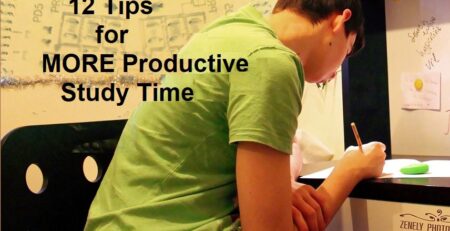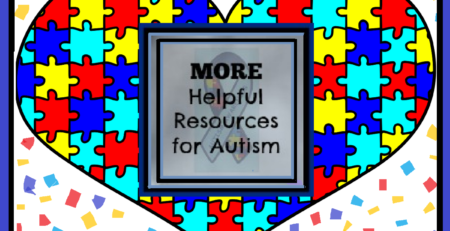ADHD Tips, Tricks & Strategies for Teens & College Students
As promised this week, we are providing our readers with a good list of helpful tips for teens and college students with ADHD. Some students in this age group often develop their own strategies to overcome or manage many of the symptoms of ADHD by the time they reach late high school or college. However, there are many who are not able to do this or who have tried to adapt but in vain.
There are specific learning strategies and study techniques that can make a measurable difference for teens and college students who really want to enjoy more academic success. We have compiled a short list of these for you to try as you begin this new semester. Just attempt to do one at a time to see how it fits in with your own personal learning style. You may find that 1 or 2 of them are good strategies for you where others are not as helpful.
Please let us know which ones work best for you and why. We’re interested in your learning success. We also would like to know if there are successful strategies you use that are not listed here. Please feel free to share these in the comment box to follow. Your good ideas could help others who are working hard to manage the many symptoms of ADHD—just like you!
List of ADHD Tips & Tricks for Teens & College Students
1. First , Learn to Be a Good Advocate for Yourself
a. Requesting time to talk with teachers, instructors and tutors can be a good first step on the road to more academic success. Always be respectful and courteous when describing your learning needs. This approach will result in having many more of those needs met. Also, remember that as a new student, you are establishing a “reputation” in the school or on the campus. Keep in mind that first impressions can last a lifetime.
b. Always ask for additional assistance BEFORE getting behind in your work. It is so much easier to take care of a problem early before it becomes a BIG issue. The bigger the problem, the more time and effort it will take you (and perhaps others) to resolve.
2. Plan the Term or Semester
a. Purchase or create a large desk calendar and plan for the study of each subject AND the specific chapters or units for each of your classes—BEFORE the semester or term begins.
b. “Map out” how much time and on which days you will study or work on projects, assignments or test prep. Be as specific as possible in this “mapping”. Describe what and how much you will do at a specific time. Allow plenty of time for quality research if that is expected for any assignments.
c. For long-term assignments, commit to starting such projects immediately instead of waiting until much later or when it’s almost due.
d. After a test, assess if enough time was allotted for each task, making adjustments for future units and assignments.
3. Use Graphic Organizers
a. Graphic organizers can help when trying to sort out information AND remember it. They help to visually categorize facts, dates, events, etc. so the facts are easier to understand AND remember.
b. Several resources offering a variety of FREE graphic organizers are:
1.) UDL Tech Tool Kit: Offers both low-tech and high-tech graphic organizers
https://sites.google.com/view/freeudltechtoolkit/graphic-organizers
2.) Graphic Organizer Maker: Web-based software for creating interactive and colorful graphic organizers – Venn Diagram, Storyboard, Mind Map, Cycle Diagram, Fishbone Diagram, KWL Chart, T Chart, Y Chart and more.
https://creately.com/lp/graphic-organizer-software-k12/
3.) 38 Examples of Graphic Organizers from Houghton Mifflin Harcourt: A FREE service for teachers and students (available in Spanish, too).
https://bit.ly/3oKrV7R
4. Flash Cards Keep Content Organized, Retained & Remembered!
a. When studying history or science facts and working memory is an “issue”, consider creating informational flash cards from ruled or unruled 3” x 5” index cards.
b. Write or type (on a computer), print, cut out and paste definitions or dates on 1 side of a card and the terms or events on the reverse side of the cards.
c. Punch holes in the upper, left-hand corner for a loose leaf ring to keep the cards “together” and flip them as you master each one’s information.
d. Although, they usually are available in white card stock, think about using colored index cards with a particular color for each chapter, content or other category of information.
e. Recycle shoeboxes as “file cabinets” for storing each chapter’s set of flash cards (use rubber bands to separate and keep organized). That way, when a semester test or exam is looming, pull out the needed flash cards and begin your review ahead of time.
5. “Change” White Page Backgrounds for More Reading Comfort
a. Try using colored but transparent acetate or polycarbonate overlays placed on white book page backgrounds, as the “whiteness” can be visually stressing and cut short your study time. Choose a different color of transparency each week, stopping when you discover which color provides the most comfort for your reading and study.
b. Consider using customizable Reading Focus Cards to also change white page backgrounds to a more comfortable and less visually-stressing color. However, these sensory-appealing tools will also help your eyes focus on 1 or 2 lines of text and block out more surrounding text to diminish distractions caused by too many words/graphics on a page. If you have ADHD or dyslexia, these tools can be particularly helpful.
All the BEST of learning SUCCESS to our teens and college students!







